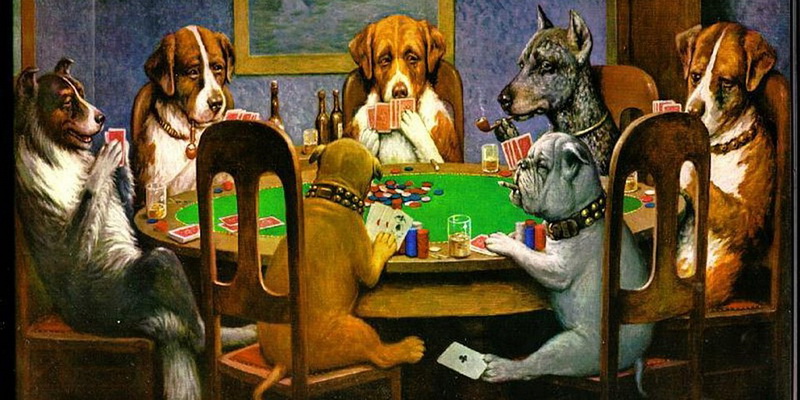Content
Poker is a game with many different nuances and playing options. It's not just about putting cards on the table. The game's strengths Poker combinations is the ultimate goal that everyone strives for. Each player at the table is in a position that will affect their future actions and risks. So, what are these poker positions and how do they matter?
Poker table and seat
Each player at the poker table has a unique position. Game poker rules gives each heading a name and category. This article gives a basic introduction to poker, covering positions, their location, value and possibilities. The image above shows the numbered positions on a ten-place table.
Frequently asked questions
❓ How many people can play poker at one table?
2 to 10 people can play.
❓ What poker positions are in play?
Players sit in 4 different positions at the poker table:
- Blinds (blinds);
- Early positions;
- Middle positions;
- Late positions.
❓ Which is the riskiest poker position?
The biggest risk of losing money is for those who make blinds. They must bet even if they have a completely bad hand and will withdraw on the next turn anyway.
❓ Which poker position is the safest to play?
The best place at the table is from the dealer. This way, you can observe what your opponents are doing during each betting round and then adopt the right strategy for the game.
❓ How do the starting cards differ when played in different positions?
Consider this:
- in entry-level positions you can only play with very good cardsbecause there is a big risk that your opponents will have something better;
- middle positions slightly weaker cards can be includedbecause you can see how your opponents behave when they play against you;
- By visiting in late positions you have seen the actions of everyone who has played before you, so if no one has bet, you can also include weaker cards in the game.
All game positions are divided into four categories:
- early positions;
- middle ground;
- late positions;
- blinds positions.

Poker positions and their markings
The people in seats 3, 4 and 5 are in the early positions. The table below gives the names and designations of these positions.
| Position title | Position marking |
| Under The Gun 1 | UTG1 |
| Under The Gun 2 | UTG2 |
| Under The Gun 3 | UTG3 |
People in seats 6, 7 and 8 are in the middle positions. The table below gives the names and designations of these positions.
| Position title | Position marking |
| Middle Position 1 | MP1 |
| Middle Position 2 | MP2 |
| Middle Position 3 | MP3 |
People in seats 9 and 10 are in the late positions. The table below gives the names and designations of these positions.
| Position title | Position marking |
| Cut Off | CO |
| Button | FTA |
People in seats 1 and 2 are blinds. The table below shows the names and designations of these positions.
| Position title | Position marking |
| Small Blind | SB |
| Big Blind | BB |
When there are fewer than 10 players at the table, then you need to subtract the positions, starting from the early positions, in order to understand which position is being played. For example: if there are 7 people at the table, then there are no more early positions.
The way poker is played in each position
Blinds poker positions
During the first betting round, people who place blinds must always invest in the game. Poker chips are paid even if they have cards that are worth absolutely nothing. On other betting rounds, they are the first to act, so they can't see how their opponents' chances of getting good hands have changed, or what their next moves might be. This is the riskiest position, and the one with the most to lose.

Early positions
People in these positions play immediately after those who have made the blinds. So the people here have received absolutely no information about what kind of poker cards the other players' hands, and which of their final poker hands will be the best.

Middle poker positions
People here have very mediocre opportunities. They can see the moves of a few players, so they are bolder in their investments, but the risk is still there because it is not yet clear what the people sitting next will do.

Late positions
These are the best and most profitable positions. The dealer position is generally the best and most desirable position. This player can see the actions of absolutely everyone who has played before him.

Poker player tracking
We've already figured out which position gives you more knowledge about other players and their actions. Now let's discuss why you need it.
Analysis of competitors' behaviour
One of the most important things in this game is to analyse the behaviour of your opponents. Serious players only bet when they have really good cards. Except when they are bluffing. But we can find out that kind of thing by watching them for a long time. After a few hands of players going all the way to the end - turning over the cards - we can get an idea of what kind of cards a person likes to bet with. If you notice several times that his cards are very poor, that means that he's bluffing, and when he bets, you can be more confident in responding to his bets.
During the game, behavioural observations are also very relevant. Let's say there are nine of you at a table and you are playing:
- UTG1 in the home position. Your starting cards are A♥️-T♥️. Since these are high, related and almost consecutive cards, you respond call 10 chips in the big bet. Other players' actions: fold, call, fold, bet, raise, fold. Since two players have bet, you are almost certain that they have a good hand, so you call in the next round of betting. You lose 10 chips;
- You are in late position in poker - congratulations! So you have the same A♥️-T♥️ cards. Before it was your turn, you watched what the others did: SB, BB, fold, bet, raise, fold, call, fold. Since you can see that the players have raised, you simply walk away from the game without any risk.
There is a lot of useful information about poker positions in this video.
A very big advantage is the ability to keep an eye on your opponents. As you can see from the example: the earlier you act, the less information you can gather about the other players and their possible cards. Conversely, if you act last, you can keep an eye on everything.
Initial card positions
No matter what position you play, you should never take blind risks that could cost you a lot of money. Poker tips will help you understand which cards to use and which not to use. The following are lists of personal Texas Holdem cards. In starting positions, it is a good idea to play only the cards listed. In middle position, it is possible to play with the cards described + the cards suitable for early position. Late position is played with the cards from early + middle + late position.
Early poker positions
When you play first, you have to make a big judgement about whether it's worth using the cards you've been dealt. In this case, you can't take risks unless you have:
- high pairs A-A, K-K, Q-Q, J-J, T-T, 9-9, 8-8, 7-7;
- A-K, A-Q, A-J, A-T, K-Q, K-J, K-T, Q-J, Q-T, J-T, J-9, T-9;
- different types of cards A-K, A-Q, A-J, A-T, K-Q, K-J.
Remember that the lower the cards listed here, the higher the risk of playing them.

Middle positions
You can add the following cards to the original list of cards when playing at these table locations:
- pores 6-6, 5-5;
- A-9, A-8, A-7, A-6, K-9, Q-9, Q-8, J-8, T-8, 9-8 in the same colour;
- Cards of different suits K-T, Q-J, Q-T, J-T.
In the middle position, a few more eligible cards appear. Although their strength is not very high, you have already been able to observe what your opponents have done in the past and decide how to proceed based on that.
Late position
This position offers the most opportunities and the most playable cards. You can additionally use:
- pores 4-4, 3-3, 2-2;
- single-colour cards A-5, A-4, A-3, A-2, K-8, K-7, K-6, K-5, K-4, K-3, K-2, J-7, T-7, 9-7, 9-6, 8-7, 8-6, 7-6, 7-5, 6-5, 5-4;
- cards of different suits A-9, A-8, A-7, K-9, Q-9, J-9, J-8, T-9, T-8, 9-8, 9-7, 8-7.
As you can see, the list of cards in this position is quite extensive. Remember that poker tactics should be followed - if you see that an opponent has bet a lot or even raised, then play only with good cards. Poor cards are only good if no one has bet. It is also best to play such cards cheaply - with small amounts of money at stake.

Understanding how to play each game of poker heading has a lot of benefits. In this case, you watch your opponents and their actions, evaluate your cards and only play those that are really valuable and can bring you monetary benefits.
